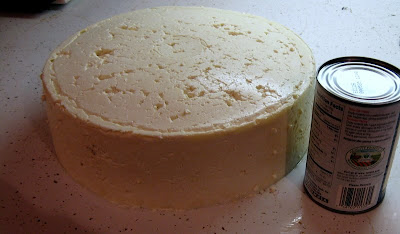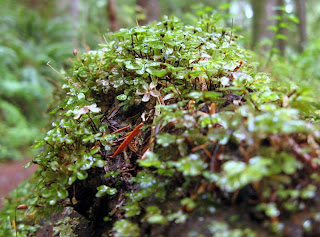 I thought it would be fun to turn what is on the left here, into what is pictured to the right. What you see there is flour, salt, yeast, corn meal, basil, canned tomatoes from my garden, milk, rennet, citric acid, a thermometer, and a pH meter. This is the DNA of pizza, and the transformation of these humble items into a slightly charred, thin crust pizza is fun, rewarding, and damn tasty. Did I mention it's fun?
I thought it would be fun to turn what is on the left here, into what is pictured to the right. What you see there is flour, salt, yeast, corn meal, basil, canned tomatoes from my garden, milk, rennet, citric acid, a thermometer, and a pH meter. This is the DNA of pizza, and the transformation of these humble items into a slightly charred, thin crust pizza is fun, rewarding, and damn tasty. Did I mention it's fun? This is approaching 'from scratch' as much as is practical, but there are some changes I'll make in the future. The biggest one is raw milk--it tastes better and is easier to work with than homogenized, but you can still get great mozzarella from regular 2%.
This is approaching 'from scratch' as much as is practical, but there are some changes I'll make in the future. The biggest one is raw milk--it tastes better and is easier to work with than homogenized, but you can still get great mozzarella from regular 2%.
Here we have 500 grams of flour and 13 grams of salt. I usually just tad more salt than traditional, but not so much as to make it salty after it is baked. A traditional recipe would probably have 10 grams, not 13, so it isn't a huge increase but it is there.

300 grams of water and 5 grams of yeast, which was set aside for ~10 minutes.

Hey look we have dough! Since I wasn't using really high protein flour like a real pizzeria would use, and it has a touch more water, it's a bit slacker and stickier than other dough. However, that ratio of flour to water tends to produce reliable, good tasting crusts, so in this regard I ignore tradition a tad :)

Prepping the ingredients for the cheese. On the left is the citric acid mixed with water, and on the right is liquid vegetable rennet diluted 20x.

And the pH of the mozzarella is correct at 5.2. Getting the pH right is the hardest part of mozzarella, since that was what makes it stretchable (sorry, no pics of that, my hands were full).

A small amount of dough spread thin over cornmeal with some roughly savaged basil. I hate it when the basil is on top--burnt basil does not taste good, nor does it look good when it is out of the oven. The cheese needs some browning, but basil does not.

And some chunky tomato sauce on top. They taste almost as good as they did when I picked them from the front yard. This pizza sauce is a bit special, since it is made from the fresh of the tomato, and the tomato water is emulsified with some good neutral oil (grapeseed in this case) and lemon juice. This gives the sauce a really big tomatoey flavor, a great mouth feel from the oil, but no gross oil slick on the final product since it is emulsified.

Some of that beautiful mozzarella on top of the tomato.

550F degree oven with all the fans blowing, on a slab of quartzite I stole from my mother-in-law.
 And I would call that lunch! A great home made pizza with a bit of cheap wine, and some very hungry looking canines.
And I would call that lunch! A great home made pizza with a bit of cheap wine, and some very hungry looking canines.






























